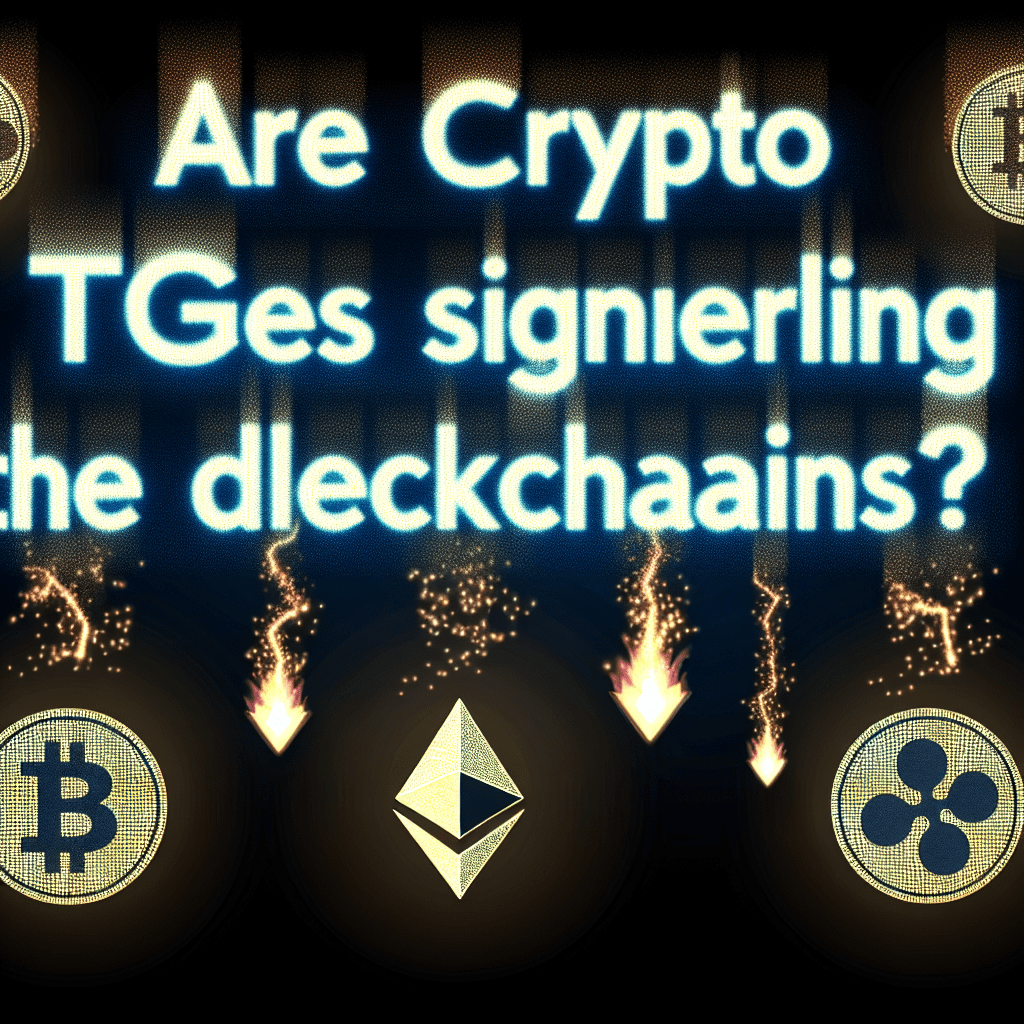Token generation events (TGEs) are facing growing scrutiny as potential exit strategies for crypto founders, leaving behind blockchains that lack meaningful activity.
Projects typically launch with minimal circulating supply and overvalued prices, offering little opportunity for genuine supporters to achieve lasting returns. Industry insiders contend that low floats and automated market makers (AMMs) temporarily support prices, but sell pressure usually overtakes the market once vesting unlocks commence.
Some tokens experience a surge at launch due to hype and scarcity, but the majority steadily decline as supply begins to circulate.
“It’s a never-ending cycle,” stated Brian Huang, co-founder of crypto management platform Glider, in a conversation with Cointelegraph. “A new chain becomes irrelevant, talent departs, and those left behind are stuck with a chain sustained by market makers and AMMs.”
The growing incidence of orphan chains post-TGE
Over the past year, numerous founders have faced criticism for departing their projects shortly after token launches.
Jason Zhao, the founder of Story Protocol, stepped back from his full-time position around six months post-launch. Initial reports indicated that his exit coincided with a six-month vesting cliff, although Story denied this, clarifying that core contributors undergo a one-year cliff in a four-year vesting plan.
Related: Crypto markets gear up for Fed rate cut amid leadership changes
“In reality, the token launch is meant to herald the project’s beginning,” Huang remarked, questioning the motives behind such early exits.
Aptos founder Mo Shaikh also resigned on Dec. 19, more than two years after launching the Aptos token and mainnet. While his exit wasn’t as immediate as Zhao’s, it was noted that it followed a significant vesting milestone.
Sterling Campbell, an investor at Blockchain Capital, acknowledged that some founders view token launches as opportunities for quick profits, but he stated that the issue extends beyond that.
“There’s also founder fatigue, misaligned incentives, and sometimes the harsh realization that product-market fit isn’t present,” Campbell shared with Cointelegraph.
“The dynamic seems less about individual wrongdoing and more about a system that allows for early exits.”
Researchers at Messari reported the significance of token vesting on a token’s performance. An analysis of 150 major tokens revealed that tokens with higher insider allocations yielded poorer performance in 2024.
Do post-TGE departures indicate an oversupply of blockchains?
The influx of token generation events raises a broader question as to whether the industry truly needs additional blockchains. What was once a launchpad for innovative networks is now criticized as the primary objective, while the blockchain itself risks being overshadowed.
In a recent talk with Cointelegraph, Annabelle Huang, co-founder of Altius Labs (unrelated to Brian Huang), asserted that the sector doesn’t require more general-purpose blockchains like Ethereum or Solana. However, she emphasized that there’s potential for new networks tailored to specific applications.
Related: Institutional adoption faces blockchain bottlenecks, according to Annabelle Huang
Some initiatives underscore this shift. For example, Hyperliquid gained prominence not by promising a new general-purpose chain but by establishing a derivatives exchange and subsequently creating its own chain. In contrast, many new layer 1 and layer 2 projects initiate without a standout application to validate their existence at TGE.
“Investment is clearly flowing into verified apps like Hyperliquid, while many new L1s and L2s are in a holding pattern,” commented Brian Huang of Glider.
The rationale behind new chains attracting venture capital remains ambiguous. Solana once positioned itself as faster than Ethereum, but most new blockchains now perform similarly. Thus, investors may prefer networks with established distribution. Concurrently, competition intensifies as corporate-led chains from firms like Stripe and Robinhood enter the arena, already boasting significant user bases.
“They boost distribution and bring crypto to mainstream users, [but] there’s a risk of undermining the principles of open networks,” Campbell mentioned.
“There’s a genuine concern that Robinhood might leverage the open-source network we’ve established over the past decade and outpace everyone else.”
TGE and vesting schedules burden long-term supporters
The situation becomes particularly concerning when a founder departs a multimillion-dollar project shortly after a TGE, notwithstanding that tokens are subject to vesting schedules intended to stagger insider sales.
Some community members argue that vesting agreements are public, and investors should be aware of the risks before investing.
However, the vesting terms present a significant challenge for the true supporters of many contemporary chains. A May 2024 report by Binance Research anticipated that $155 billion worth of tokens will be unlocked by 2030. Without adequate demand to accommodate them, the gradual release of supply threatens to create sustained selling pressure in the market.
This tension highlights a more fundamental issue with TGEs themselves. Initially designed as fundraising tools, they increasingly act as liquidity events that benefit insiders while leaving ecosystems devoid of their founding leaders.
Unless projects can showcase sustainable use beyond their launch events, the cycle of inflated valuations, premature exits, and dwindling blockchains is likely to persist.
Magazine: 7 reasons why Bitcoin mining is a terrible business idea

